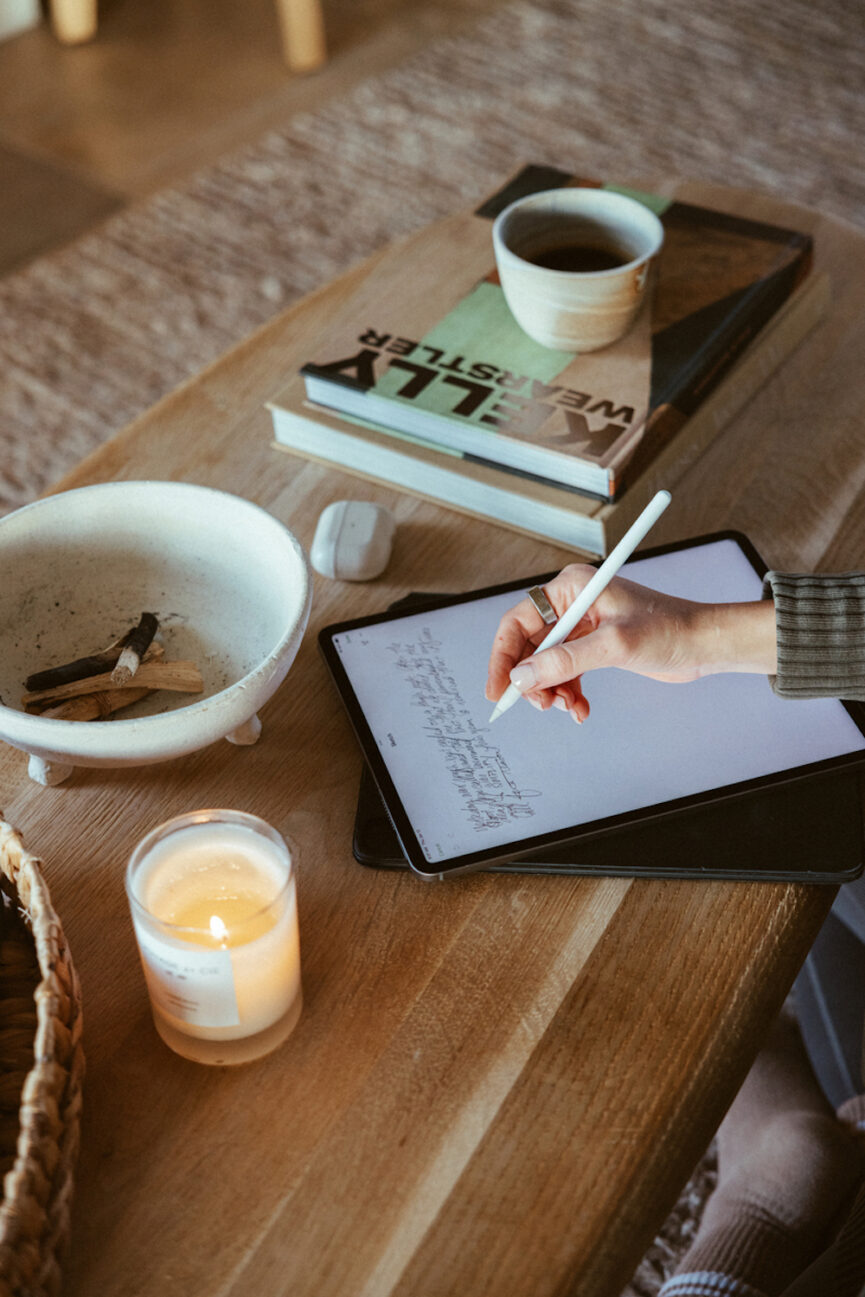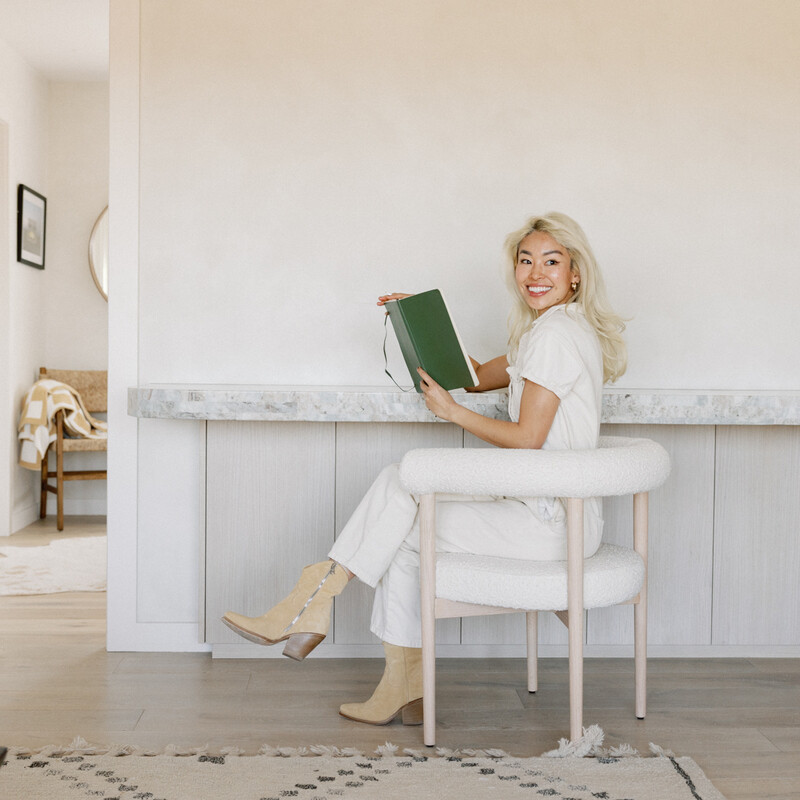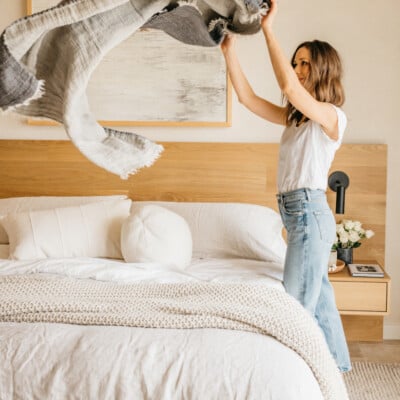I wasted too many years believing that success required unwavering discipline. I’d go to the gym 10 days straight terrified that a break would mean a loss of momentum. (Of course, I burnt out and actively hated exercise for months.) This thinking can apply to how we assume others accomplish their goals as well. They must always eat healthily. I bet they crave an hour-long spin class. They’ve probably never gotten less than 8 hours of sleep in their life. No—they just know the power of habit stacking.
In truth, I’ve never considered myself disciplined. Despite (now) having a consistent workout routine, building a healthy and balanced lifestyle wasn’t the result of gritting my teeth and living out of alignment with my authentic self. (Though sure, I’ve gone to many a 6 a.m. workout class when all I wanted was to sleep in.) I’m constantly tapping into a range of behavioral techniques that make embodying my best self a little easier. And habit stacking sits right at the top of that list.
Featured image from our interview with Remi Ishizuka.


What is habit stacking?
Like clockwork, another champagne-fueled NYE makes way for resolutions to cook meals at home and well-intended (though vaguely worded) goals of following healthier routines. But spoiler: without a strong habit framework behind this desire to live a fuller, more purposeful life, the odds of success aren’t in your favor.
Strategizing around these lifestyle shifts—and drawing upon research-backed techniques—is key to making your vision board a reality. What’s more, when we make healthy, supportive habits more desirable to practice, they become easier to implement. And that’s why habit stacking is so powerful.
How Habit Stacking Works
Habit stacking relies upon synaptic pruning (the brain’s process of eliminating unused neuron connections and prioritizing those used more frequently) to help you build new skills and rituals with ease. As James Clear writes in Atomic Habits, “It is a biological change that leads to skill development.” Think back to when you were in school and had to read 30 minutes a night, or how your parents said you wouldn’t get better at the flute without consistent practice. The more you engage with any skill, the stronger the connections between those neurons become.
While Clear didn’t coin the phrase—proponents abound, but S.J Scott introduced the term in his book Habit Stacking: 97 Small Life Changes That Take Five Minutes or Less—I find his explanation of habit stacking the most accessible. To draw upon Atomic Habits further, let’s look at Clear’s explanation of how habit stacking works.
“When it comes to building new habits, you can use the connectedness of behavior to your advantage. One of the best ways to build a new habit is to identify a current habit you already do each day and then stack your new behavior on top. This is called habit stacking.
Habit stacking is a special form of an implementation intention. Rather than pairing your new habit with a particular time and location, you pair it with a current habit.”


Examples of Habit Stacking
You might not realize it, but you move between countless ingrained habits throughout your day. Brushing your teeth, taking a shower, driving to work, making coffee, prepping dinner, etc. And I’m sure you can think of plenty more. The beautiful thing about habit stacking is that there are countless places to start.
Let’s use Clear’s habit stacking formula to identify some examples.
After/Before [CURRENT HABIT], I will [NEW HABIT].
- Before I get out of bed, I will take a sip of water from the bottle on my nightstand.
- After I pour my coffee in the morning, I will take five deep breaths.
- Before I eat breakfast, I will do a brief meditation.
- After I get in the shower, I will think of three things I’m grateful for.
- After I get into bed at night, I will journal for five minutes.
These examples show how habit stacking works on a biological level. It takes advantage of the habits you already do regularly—and have therefore built a strong network of neurons around—to strengthen the connections for new habits and skills to flourish.
To begin implementing this in your own life, identify 3-5 habits you already do daily and pair them with 3-5 habits you’d like to do. Be mindful of what aligns with your schedule and which habits make sense to pair.


How to Use Habit Stacking to Reach Your Goals
While it may seem like you have everything you need to start habit stacking, there are a few things to keep in mind to successfully incorporate it into your life.
- Be specific. Just as the best goals are clearly intended, our habit stacking cues must be explicit. Ditch the ambiguity and pinpoint the exact time and place that precedes your new habit.
- Prioritize action. When identifying the habits you want to begin regularly practicing (as well as the habits you already do), be sure to “provide instruction on how and when to act […] The more tightly bound your new habit is to a specific cue, the better the odds are that you will notice when the time comes to act,” writes Clear.
- Create contingency plans. Ideally, you should be able to do your cues and habits regardless of the weather or other obligations. But life happens. As you create your own habit stacking framework, brainstorm alternatives if you can’t go for a walk outside or if your kids’ schedule overrides your breathwork routine.
- Start small. And be realistic. At the start of every year, we’re bound to get caught up in the wide-sweeping, take-over-the-world goals that everyone seems to be making on social media. But the beauty of habit stacking lies in the fact that it makes the most of our small, everyday actions. So if you’re tempted to meditate for 30 minutes after making coffee, dial it back to five and work your way up from there. Remember: the journey is a worthy venture in itself.





